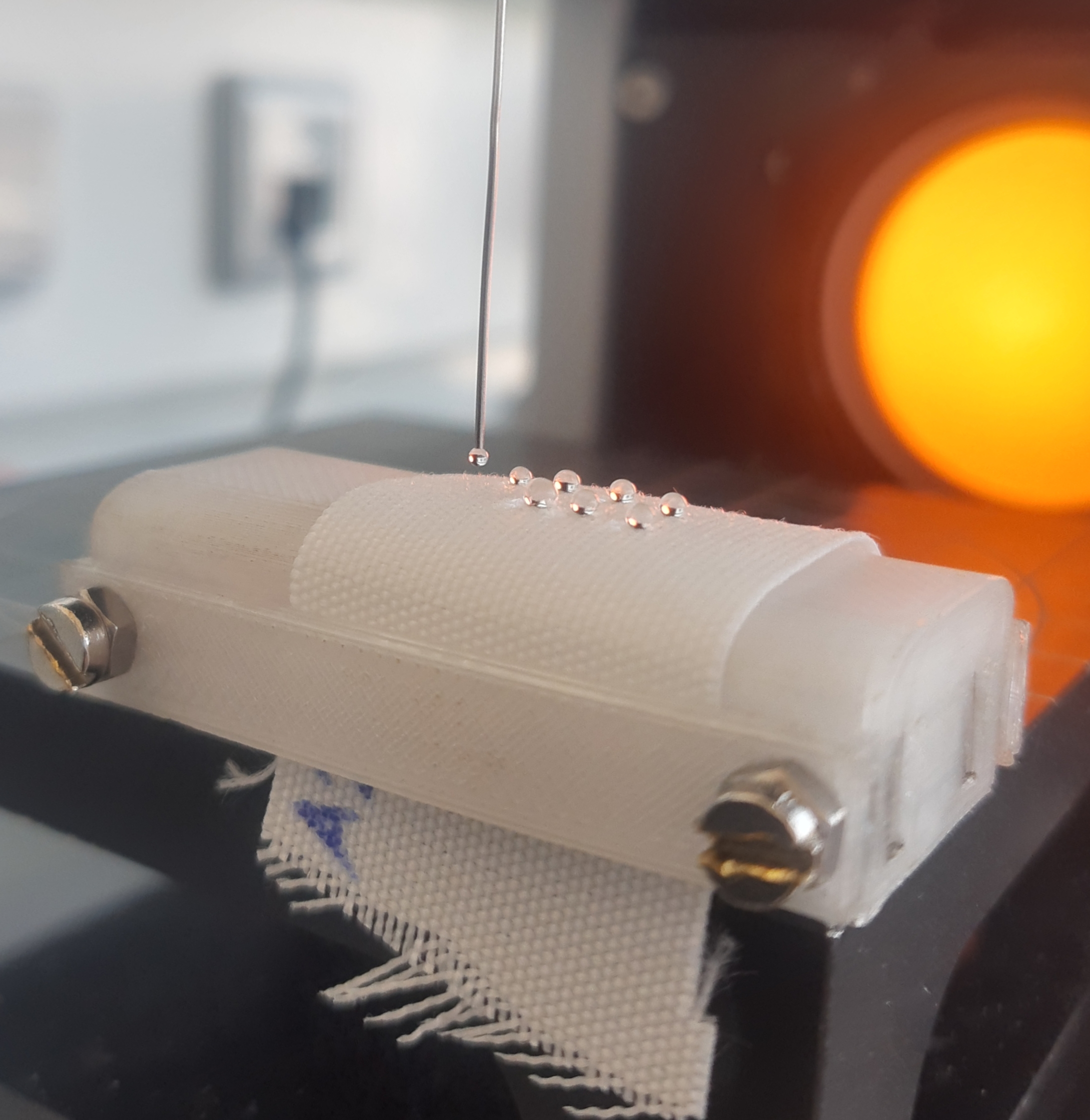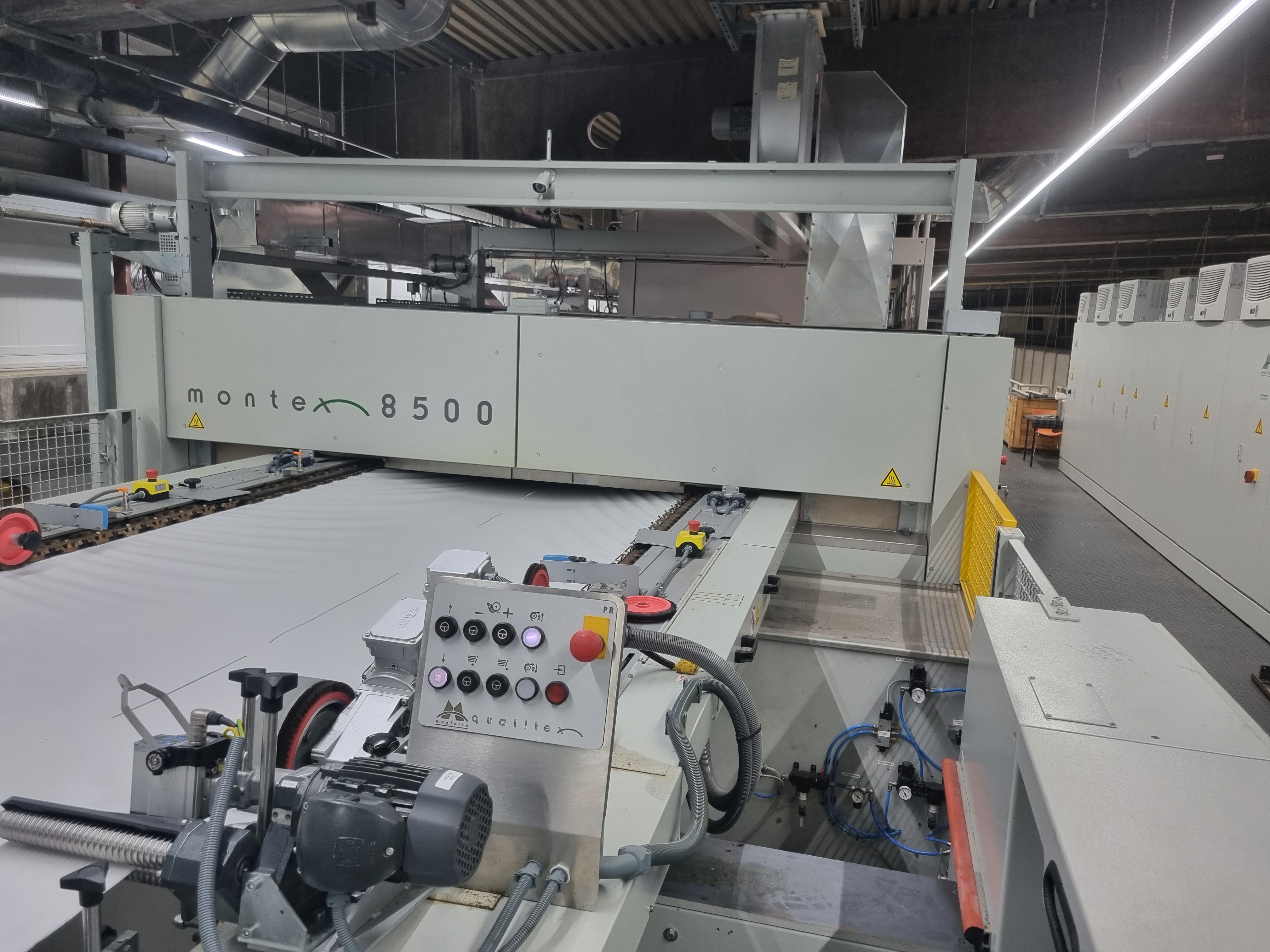A project coordinated by Fraunhofer IGB has successfully demonstrated how textiles can be finished using chitosan in combination with bio-based hydrophobic molecules – as an environmentally friendly alternative to perfluorinated chemicals. This innovation could replace PFAS finishes with fewer requirements. The developed formulas have already been successfully adapted to various materials, including paper and cardboard.
ExpandChi – Expanding the possible applications of renewable raw materials in textile finishing based on the biopolymer chitosan
Challenges
The production of textiles is still heavily influenced by chemicals: For example, perfluorinated chemicals are often used to finish textiles with water and oil-repellent properties. These could not only be harmful to our health, but are also non-degradable, which is why they remain in the environment for a long time. However, sustainability is increasingly in demand, even for textiles. In the HydroFichi project, Fraunhofer IGB has proven that textiles can be coated with the biopolymer chitosan and then given a water-repellent finish by binding hydrophobic molecules using biotechnological processes.
Objectives and project plan
The aim of the follow-up project ExpandChi, coordinated by Fraunhofer IGB, was to extend the scope of application of chitosan to the entire finishing process in the textile industry and thus implementing more bio-based reagents and processes into the textile value chain.
Results
The process developed in the HydroFichi project for modifying biobased chitosan as a functional carrier for binding hydrophobic molecules was successfully transferred to other substances in ExpandChi and the overall concept was further developed. This included modifying the chitosan with chemical and bio-based cross-linkers.
For instance, in ExpandChi, the washing resistance, binder replacement, water-repellent effect, increased abrasion resistance and crease protection were investigated and evaluated based on the suitable structural, physical and chemical properties of chitosan.
Together with our partners, we were able to develop chitosan-based water-repellent finishes as part of the investigations, which could replace PFAS finishes in the leisure textiles sector in the future, whereby a further improvement in water repellency and wash permanence is potentially necessary depending on the application.
The water-repellent finish has already been successfully adapted to other materials (paper and cardboard). The technology has also been implemented on a larger scale. A large textile sample will be presented at the World Expo 2025 in Osaka.
Impact
The chemical and biotechnological modifications developed in the project can also be transferred to other polysaccharides for the production of additional functionalities. The customized derivatives of chitosan can also be used for other applications, for example as adhesive layers or coatings, or as chitosan-based binders for the wood-processing industry. It is also conceivable that the chitosan formulations could be used on paper and cardboard for the packaging industry.
Project informationen
Project title
ExpandChi – Expanding the possible applications of renewable raw materials in textile finishing based on the biopolymer chitosan
Project duration
February 2021 – January 2024
Project partners
- Fraunhofer-Institut für Grenzflächen- und Bioverfahrenstechnik IGB, Stuttgart (Coordination)
- Deutsches Institut für Textil- und Faserforschung Denkendorf (DITF), Denkendorf
- J. G. Knopf's Sohn GmbH & Co. KG, Helmbrechts
- Textilchemie Dr. Petry GmbH, Reutlingen
Funding
We would like to thank the German Federal Ministry of Education and Research (BMBF) for funding the project “ExpandChi”, promotional reference 031B1047A.

 Fraunhofer Institute for Interfacial Engineering and Biotechnology IGB
Fraunhofer Institute for Interfacial Engineering and Biotechnology IGB
